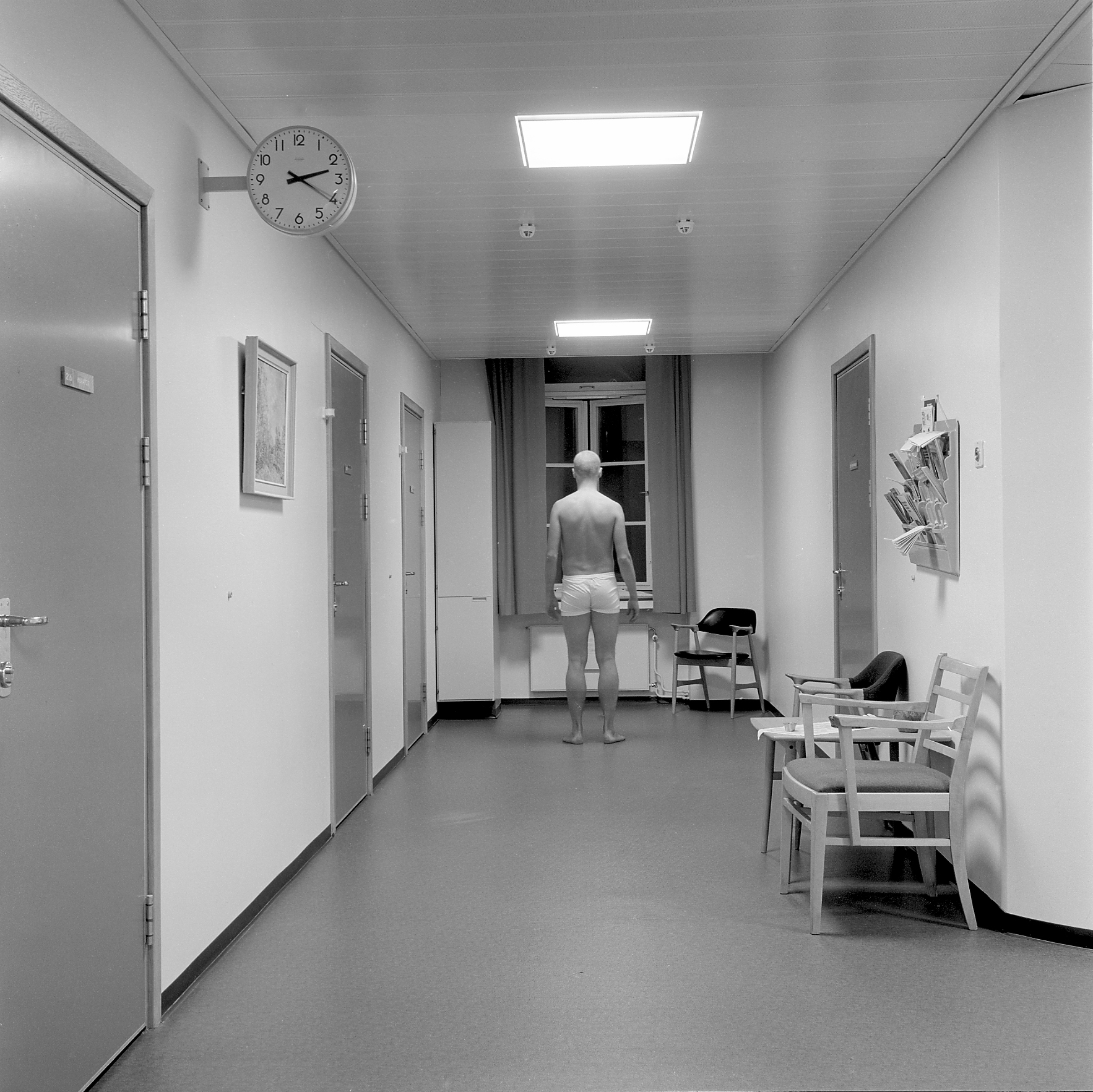DAG ALVENG
THE ASYLUM PROJECT
— In the early seventies I was a young man with a strong interest in art and photography. My upbringing however, had brought me in another direction, to the study of medical science. I was particularly interested in the “ways of the mind”. After highschool I decided to take on work as a nightguard at the local psychiatric hospital, before I started studying at the University of Oslo.
At night, most people sleep. If patients have trouble sleeping, they get medication, and they sleep. The mental hospital was a very quiet place at night, and at some point I took out my camera and took some photographs. I was interested in finding out how the place looked photographed. At the time this was more a result of boredom and experiment than a result of planning and thought. Still, a hospital is very much a hospital, even at night.
My interest in art and photography continued to grow, and finally, I chose that as my profession. After a year of photographic studies at Trent Polytechnic in Nottingham with Paul Hill, Thomas Joshua Cooper and Christopher Seiberling my ideas of photography were clearer.
Through the study of the history, and my own praxis, I had developed a vision, a belief that photographs may be found everywhere, a belief that it is possible to make interesting photographs anywhere as long as there is light. Hence I used to carry my camera around with me at all times.
At some point in the late seventies I realized that my first photographs from the mental asylum were powerful. I started to work as a nightguard again – but this time in order to make photographs from the asylum. I smuggled in my medium format Rolleiflex camera and a small tripod in my bag and continued to work night after night. I even took an occasional photograph of a patient and once posed myself, in my underwear. I told no one at the mental hospital what I was doing, most likely I would not have gotten a permission.
I started to take an interest in the surfaces, textures, the residue of the day gone by, the traces of the actions being performed during the daytime, the quality of the neon light at night. I started to see the loneliness of the place, especially during Christmas. The daytime staff put up the Christmas decoration in a rather arbitrary, sloppy fashion, and I focused on that during the night.
Gradually the photographs started to grow on me, and I was more able to see the story they tell.
I showed the work to Svein Christiansen, a friend who was also at that time the director of the Trondheim Art Museum, and he wanted me to do a show with that work. The first show took place in 1983. The book Asylum was published in 1987. The book had to be handbound and I could only afford to bind 400 copies. In the nineties the american gallerist Holly Solomon saw the book, and wanted to do a show in New York. We had another 100 books handbound for that show. Now the book is very hard to find, one was auctioned at Christie´s this spring.
After the first show I wanted to continue to work on the project, but I did not get any more nightshifts. Most likely the rumour had spread to the direction of the hospital, the photographs were probably considered bad publicity. I had to leave my project at that. Though I never published a photograph of a patient, the pictures are saturated with human emotion – they tell a sad story of loneliness, despair and pain.
Above, an unpublished self-portrait from ASYLUM.
Dag Alveng was born in Oslo in 1953. His work has been shown in solo and group shows around the world. His photographs are in the permanent collections of major museums in America and abroad, including the Metropolitan Museum of Art, New York; the Museum of Modern Art, New York; Museum Folkwang, Essen; Sprengel Museum, Hannover; Stedeijk Museum, Amsterdam; Moderna Museet, Stockholm; Museet for Samtidskunst, Oslo; and Henie-Onstad Kunstsenter, Bærum. Alveng has published several books, among them ASYLUM (1987), THE SHIPYARD AT SOLHEIMSVIKEN (1990), LAYERS OF LIGHT (1995) and SUMMER LIGHT (2001). He has organized many exhibitions. Between 1986 and 1996 he commuted between Oslo and New York, and now lives in Oslo.


